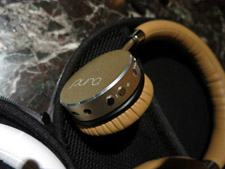It’s the time of year for saving money!
For most of the hundreds of new headphones I saw at CES a couple of weeks ago, the pitch was pretty familiar. Some claimed better sound quality. Some claimed better noise cancellation. Some claimed cooler features. Some claimed awesome looks. But only one had a truly unique pitch — one that’s as much about preserving your hearing as it is about what you hear from the headphones.
 The pitch was delivered to me across a table at the bustling Grand Lux Cafe in the Venetian Hotel, by Jason Wehner and Tom Grueskin of Puro Sound Labs. I already knew Wehner as one of the best product managers in the audio biz, the guy most responsible for elevating Vizio’s soundbars to their current state of performance. What he pitched me, though, was not some high-end, ultra-performance headphone, but one created with the primary purpose of achieving a satisfying listening level without endangering the listener’s hearing.
The pitch was delivered to me across a table at the bustling Grand Lux Cafe in the Venetian Hotel, by Jason Wehner and Tom Grueskin of Puro Sound Labs. I already knew Wehner as one of the best product managers in the audio biz, the guy most responsible for elevating Vizio’s soundbars to their current state of performance. What he pitched me, though, was not some high-end, ultra-performance headphone, but one created with the primary purpose of achieving a satisfying listening level without endangering the listener’s hearing.
There are some kids’ headphones that limit maximum volume, but as Wehner put it, “They’re designed to be cute and low-priced. The response curves are horrible. The companies don’t seem to know anything about sound.” (My measurements of a few kids’ headphones, including the Funko Darth Vader, support this contention.)
Most such headphones simply attenuate the volume passively, an approach that may not deliver a satisfying volume. According to Wehner, the manufacturers usually reduce the magnet size, which reduces sensitivitiy of the driver but can leave the bass sounding uncontrolled and sloppy. The Puro approach is to use active electronics to limit the maximum level to 85 dB. A tuned limiter inside the headphone clamps down on the input voltage once it rises above what’s needed to hit that 85 dB number. According to Wehner, the way the limiter is tuned, with a slow release, means “you never hear it limiting.”
To make sure that 85 dB is loud enough for you, the Puro design uses extensive passive ambient noise isolation, so outside sounds don’t compete as much with what’s coming out of the headphone drivers. Puro Sound claims 82% noise rejection, thanks in large part to a metal housing and an extra plastic layer underneath.
The most surprising thing about the prototypes I listened to is that they sound really good. They’re tuned to what Grueskin and Wehner call the “Puro Balanced Response Curve.” “The target curve is a set of high-end speakers in a good listening room,” Wehner said — which is basically the same concept used in the tuning of the award-winning PSB M4U 2.
But maybe what I liked best about these headphones is that I got a satisfying listening level without having to crank them — much as I do with custom-molded in-ear headphones such as the Ultimate Ears Capitol In-Ear Reference Monitor.
Puro’s first headphone, the BT2200, incorporates Bluetooth wireless; comes in sizes for kids and adults; and is available in white/silver and tan/gold color schemes. Looking over them, I figured they’d cost $150 to $200, which might be too high for a set of kids’ headphones, but no — they list for $79.
I’m happy somebody in the headphone industry is serious about this issue, and I’ll be curious to see how headphone enthusiasts react. Do you worry about your kids losing their hearing from blasting their ever-present headphones? Do you worry about damaging your own hearing? Let us know in the comments section below.





